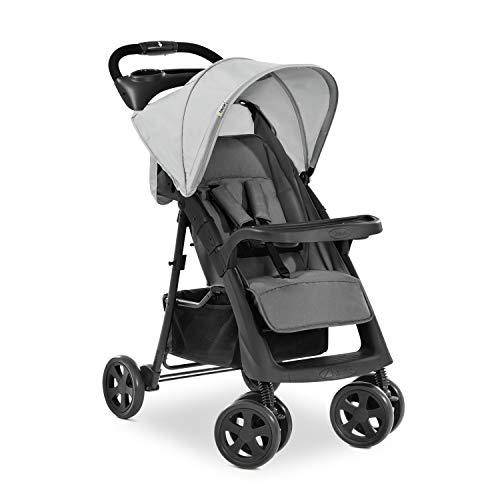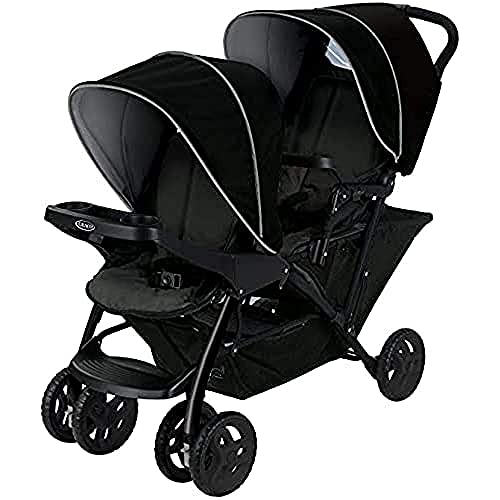A Complete Guide To Parent Facing Pram Dos And Don'ts
페이지 정보

본문
 Monitor Your Little One's Wellbeing With a Parent Facing Pram
Monitor Your Little One's Wellbeing With a Parent Facing Pram You can easily track your child's comfort and well-being while they're in a parent-facing pram. This is especially useful during busy times.
You can easily track your child's comfort and well-being while they're in a parent-facing pram. This is especially useful during busy times.University of Dundee study found that babies who were in buggies with faces were more playful and had twice as much chat time and had lower heart rate - all indicators of less stress.
Peace of Mind
A pram with a parent's face is an excellent way to protect your baby's security. The seat is secured with a five-point harness and protect your baby from any injuries.
A quality pram will also have an enormous shopping basket to accommodate all your baby's necessities and ensure that you don't have to think about where to place all of the other items. The right accessories are essential to ensure that your baby stay at ease throughout their journeys, such as a footmuff (check whether they're compatible with a 5-point harness) and a liner for the pram to guard against rain or sun.
It is essential to test the pushchair prior to purchasing it for your child. Look for models with swivel wheels for manoeuvrability and adjustable handlebars to ensure all members of the family can use it.
A safety harness is crucial for parents who are worried about their child falling out of the buggy. It will prevent your child from escaping the seat, and it's also a great option to keep them in close proximity in the event in the event of an emergency.
It's important to know that some experts on babies recommend that babies are around six months old prior to using prams with front facing windows, but this is down to individual development milestones. However, some babies will be able to take on the world earlier, specifically those who are curious and eager to explore the world around them.
Parents might be concerned that their child will form a flat region on the back of his head if they are in a pram facing them, but there's no need to worry. Auckland osteopath Julia Griffiths suggests that babies must spend a significant amount of time lying on their backs in order to strengthen their skull muscles, and this can often be done by using a carrier in a position that is affixed to the parent, alongside being supervised during tummy time.
Enhanced Bonding
It is important to consider the direction your baby faces when they are out and about, whether you are using a pram or pushchair. It might seem like a small detail but it has a big impact on your little one's development and interaction with you while out and about.
A new study has revealed that babies who are in buggies facing away are less likely to talk or interact with their parents compared with those who choose a parent facing pushchair. The study tracked 2,722 children and their parents in 60 towns and a more detailed second study of 20 mothers and their infants. The study found that babies who were in a pram with their parents were twice as likely to smile as those who sat in a buggy facing away. The reason is that when your child is able to see you, they are more engaged and excited to share their experience with you, which encourages interaction and bonding.
Face-to-face interaction between babies encourages attachment and development. It also lets you show them things, such as buses and playgrounds, or flowers that they might not notice otherwise.
It is essential to remember that your child must be able to sit up on their own before you convert it into a pushchair that faces toward the front. Babies who are older than this might struggle to adjust and may feel more anxious because they have to shift from an inward to an outward position.
The best way to be sure your child is prepared for the change is to have them tested by a medical professional. They can check whether your child's bones as well as muscles are strong enough to withstand the change, and also if they have developed any sensitive areas. This test is particularly important if you have used your pushchair since the time of your baby's birth or if you've previously had an outward-facing pushchair. A doctor can help you determine if it is safe for your child to take a seat in a pushchair that faces toward the front.
Better Eye Contact
The ability to make eye-contact with your child is one of the most appealing features of a pram that is facing you. This is especially crucial for infants and newborns since they are learning about the world around them. It's also an opportunity to talk to them and play with them which helps them to learn the names of the things they see and improves their development in language.
Research has shown that when a child is placed in front of their parents they are more likely to talk to them and laugh than when they're away from them. This is due to the fact that babies absorb sounds and images from their surroundings. They are able to better comprehend what's happening around them. In addition, eye contact allows parents to communicate with their children, which can help ease their pain and allows them to relax.
It's also recommended to bring along a travel stroller-friendly toy for your child to play with when they're in their pushchair. These toys stimulate the mind and make children smile. They can also help your child recognize your voice, which is essential for their cognitive development.
Babies are always exploring the world and surroundings. As they age and become more active, they may be ready to sit up in their pushchair. If this is true, it's worthwhile considering a front-facing triple stroller or pram from our collection.
After a few months of the transition to a front-facing pushchair, it's recommended that you add a footmuff to keep your baby warm and comfortable. Find a model that can be attached and removed as needed and is compatible with your baby's car seat or crib. It's also recommended to buy an item with a distinct design that can help your baby recognize their pram when out and about.
One of the best travel pushchair ways to ensure that your baby's pushing posture is correct and that they're comfortable is to check their head and neck alignment on a regular basis. If the front of the pushchair tilts forward then their neck and head are being pushed against it. This is not a safe practice.
Easier Monitoring
The reassuring sight of your child's face in a pram that is facing you allows you to observe your child better. You can see the signs that your baby is sleepy, upset or upset, or cold. You can also see whether their hat or socks are missing. Having a baby on your lap makes it easier to talk to them since they are able to look at you and listen to your voice.
This is particularly important for babies and toddlers who suffer from language or speech delays as it can help stimulate them. It is also a great method to help them understand the world around them, for instance when you point out busses or flowers. It is also a good opportunity for you to sing to them too, especially if they like singing!
Many studies have shown that babies facing their parents enjoy talking with them. This study from Dundee University, for example, found that babies talked twice more in a pushchair positioned forward than those facing rearward. The same study revealed that babies who's faces were not visible by their parents displayed more fluctuations in their heart rate, suggesting that they felt anxious and stressed. Heart rates were less agitated and more consistent for babies who could see their faces.
However this doesn't mean all children should be changed from a rear-facing baby stroller to a front-facing model right immediately. In fact, it's often advisable to wait until your child is at minimum six months old before making the switch. This is the age at which their bones and muscles are fully developed enough to make the transition secure for them.
Because of this, many parents choose to keep their babies in a parent-facing stroller until they are. There are numerous excellent strollers and pushing chairs that let you switch between two positions so that you can keep your child in a parent-facing position for as long as you'd like. Be sure to verify the compatibility of your chosen buggy or stroller with the car seat you're planning to use, since the compatibility can vary among models.
- 이전글Check Out What Power Tools Online Tricks Celebs Are Using 25.01.13
- 다음글7 Essential Tips For Making The Most Out Of Your Locksmith Prices 25.01.13
댓글목록
등록된 댓글이 없습니다.
